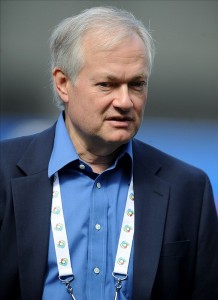How does the National Hockey League earn a record $3.3 billion in revenue and yet most of its teams lose money? The answer is the lack of a revenue sharing program that helps out all 30 NHL teams.
This article certainly isn’t the first published work that argues this point. While the two sides have been hung up on the share of hockey related revenue each side will receive, and whether all current contracts will be honored going forward, it is the revenue sharing program that will determine the health of the league.
In an article published in Forbes three days after this lockout, the NHL’s third in the last eighteen years, the disparity between the teams earning money and the teams losing money year after year was laid out. According to the article, the Toronto Maple Leafs, New York Rangers, and Montreal Canadiens had a combined operating profit of $171 million during the 2010-11 season. The other 27 NHL teams combined to lose $44 million in the same time period.
To put those same numbers in a different perspective, eighteen of the 30 NHL teams lost money during that year, despite the fact that the league saw record revenues.

It may be unfair to compare the NHL to the other three major team sports in North America because the discrepancies in revenue are large. However, there are lessons that can be taken from their collective bargaining agreements.
MLB doesn’t have a salary cap, but their revenue sharing program helps out organizations who don’t have deep pockets compared to their competitors. In the NFL, the enormous amount of revenue that the league earns from their television deal is distributed equally between its 32 teams.
Certainly teams like the Maple Leafs, Rangers, and Canadiens don’t want to share the revenue they earn with teams like the Coyotes, Islanders, and Blue Jackets. But the issue at stake is much larger than the financial growth of one franchise.
Let’s take a look at a hypothetical situation. For example, let’s say that the NHL and the NHLPA agreed to a collective bargaining agreement for seven years that gave each side a 50/50 split of hockey related revenue (HRR) for each year of the deal. If the league continued to grow at the rate it has over the last three years, and the salary cap was reflected by the league’s overall revenue, then the small market teams would lose as much money in the later years of that deal as they did in the last few years of this deal.
What would the result be? The owners would push to get a greater portion of HRR in order to cover their expenses, and the league would go through another lockout.
While big market teams would ultimately be unhappy with revenue sharing, the revenue they would get from that would be greater than what the revenue they are earning during the lockout, which is zero. For the betterment of the NHL, these owners need to help out their colleagues in small market cities.
It is the only way that the league will be able to maintain its growth, stability, and ultimately create labor peace going forward.
The league liked expansion. However, if teams are not making it, maybe instead of trying new cities, it is time to DE-EXPANSION and cut the number of teams losing money. 30 teams may be more teams than the league is capible of substaning.
I think contraction would be a non-starter with the union. The players think it’s bad enough that the owners want to reduce the amount of money they make, but eliminating a minimum 23-25 jobs per each team that is contracted will be even worse in their eyes.
Agreed! The big clubs won’t like it, but revenue sharing is the only way to equalize things and keep some of the lesser clubs going. Revenue sharing is a long term solution, everything else is just fodder.